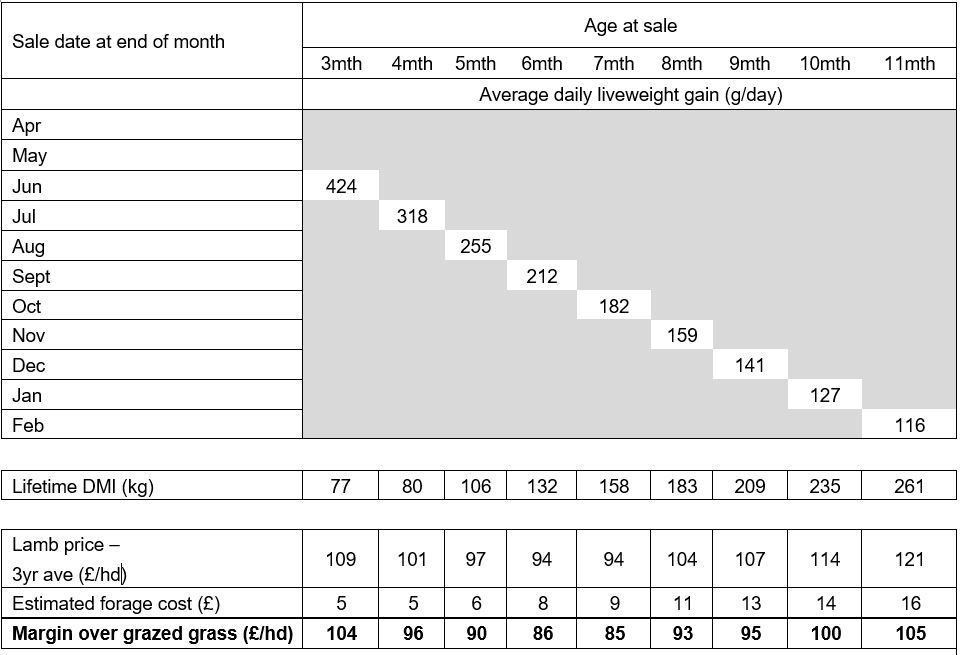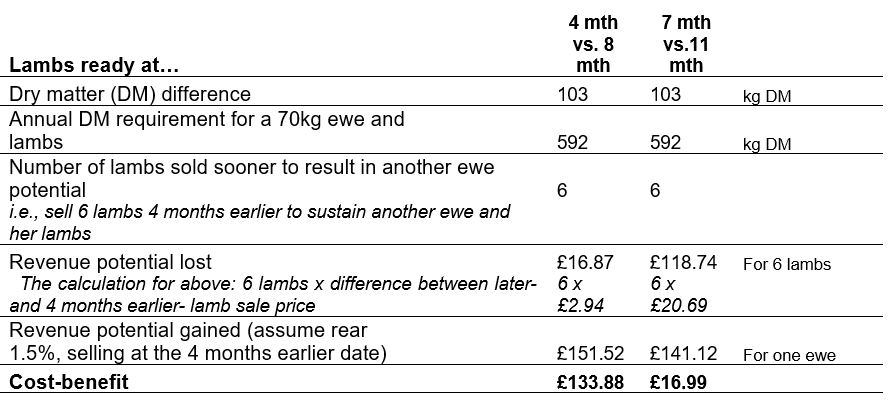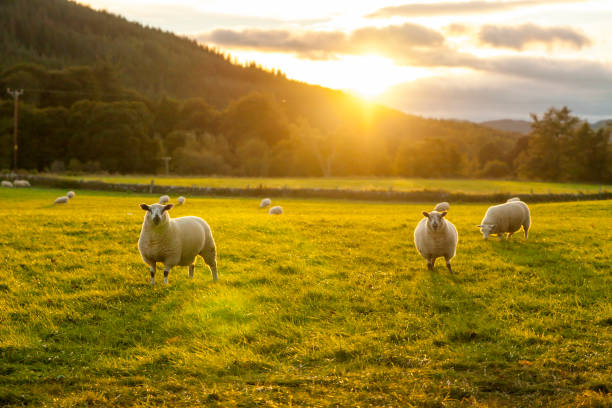Why Finishing Lambs Sooner Increases Profits
2 June 2023
Selling lambs at 11 months old may lead to a greater return per lamb, and for those on grass alone the profit margin may also look favourable. However, when we consider additional potential costs, the opportunity cost of the grass they consume plus the risk of disease and changing lamb price, a focus on lamb growth rates and thus, faster sale of lambs may have a greater influence on overall farm profitability.

Looking at the above table, you can see the margin based on grazed grass alone varies by £20 per lamb, yet this additional margin can quickly be corroded. For example, those selling at 11 months might incur the expenses below compared to those selling at 7 months:

A more significant cost is the opportunity cost – what else could you do with that grass to make more money for your business? Using the example of the potential to keep more ewes, see below:

For both examples in the table above, a positive cost-benefit is demonstrated indicating that focusing on lamb growth rates for a quicker sale is beneficial to farm profitability. This is most evident when comparing those finished at 4 months and those at 8 months due to less change in lamb price during this period.
Alternatively, you may use the grass to build ewe condition and thus lambing percentage, increase the second cut silage, or additional grazing for cattle.
Poppy Frater
Sign up to the FAS newsletter
Receive updates on news, events and publications from Scotland’s Farm Advisory Service

